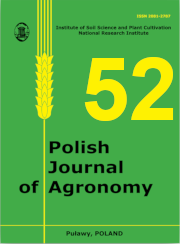Diversity of Nicotiana species
Main Article Content
Abstract
The genus Nicotiana is one of the largest in the Solanaceae family and includes more than 80 species. The most well-known and widespread species of the genus Nicotiana is tobacco (Nicotiana tabacum), within which there are numerous cultivars. Tobacco is one of the most important industrial plants in Poland and worldwide. The great diversity within the genus makes it an excellent source of variation in a narrowing gene pool and can be used in breeding programmes. Studies of Nicotiana species also concern mechanisms of polyploidisation and evolution. There are also model species within the genus. However, in order to make full use of the collected germplasm resources, a detailed knowledge of the collection materials is necessary. While there are various reports in the international literature describing specific issues, the aim of this paper is to indicate the diversity of species in the genus Nicotiana as a whole on the basis of our own research and available studies. This review covers the characterisation of the genus Nicotiana in terms of origin and geographical distribution, as well as cytogenetic and molecular differences between species. An important aspect is the presentation of the morphological diversity of Nicotiana accessions and the variation in the most important tobacco alkaloids. A very important issue is the resistance of Nicotiana species to bacterial, fungal and viral diseases, which allows their use in resistance breeding.
Article Details

This work is licensed under a Creative Commons Attribution-ShareAlike 4.0 International License.
The author grants the editorial staff of the Polish Journal of Agronomy (abbreviated as PJA) a non-exclusive and royalty-free license to use the author's copyright in the paper/printed and electronic versions of his/her work published in PJA in Poland and abroad, in whole or in any part, including placing the work in electronic databases/databases locally or available on the Internet, for an unlimited period of time in the fields of exploitation specified in article 50 of the Copyright and Related Rights Act.
Manuscripts published in Polish Journal of Agronomy are available under a Creative Commons Attribution-ShareAlike 4.0 (CC-BY-SA) license.

